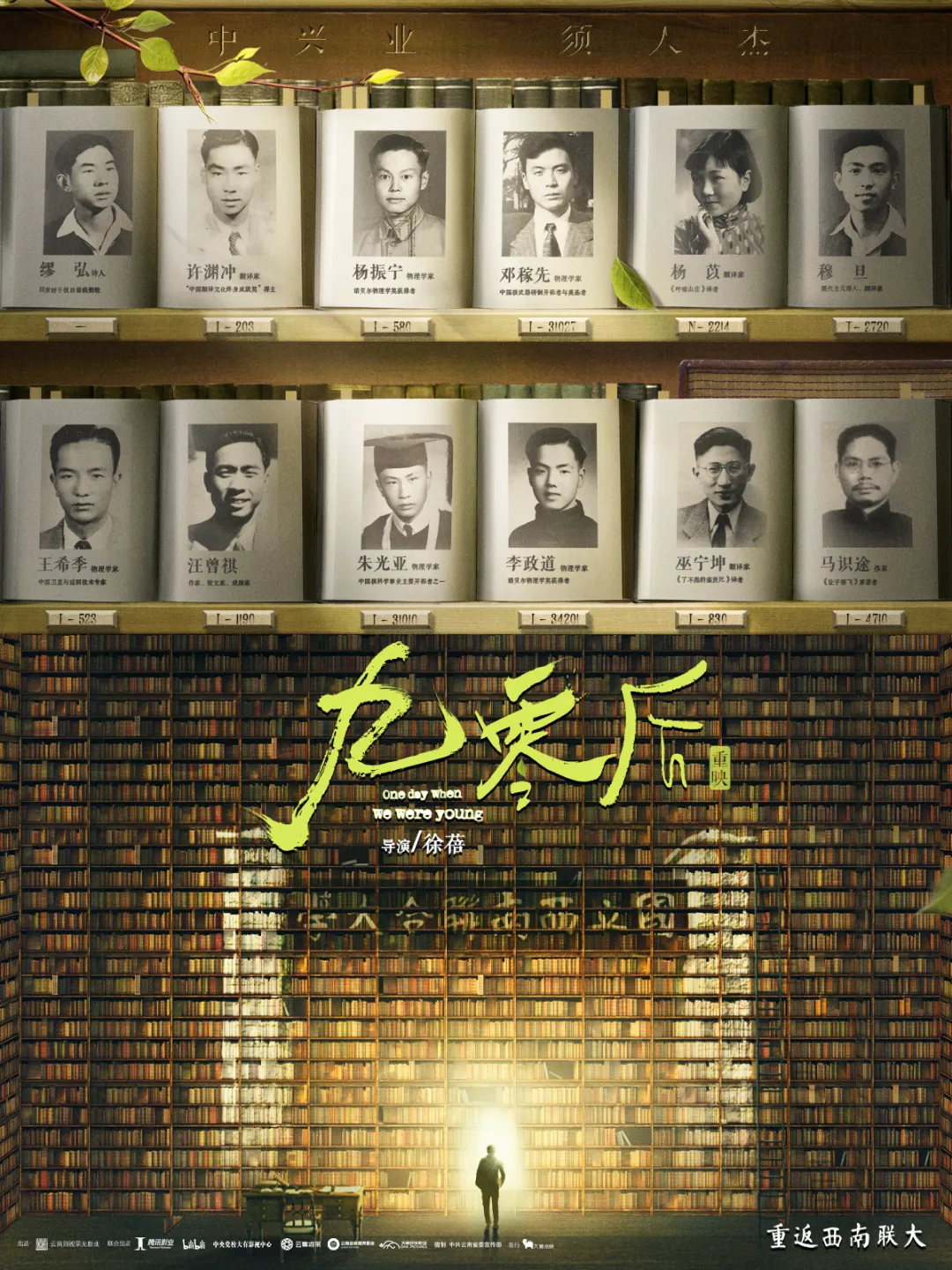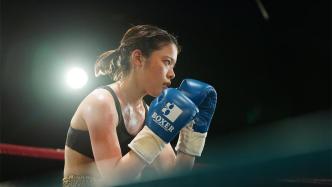
Note: This article contains spoilers
"Keiko, Gaze" was named the best Japanese film of 2022 by the Film Weekly. The author's first reaction when I saw the list was that the Japanese really love boxing.
The bottom line, women, hearing-impaired and deaf-mute, boxing, all keywords are intertwined, and it is too easy to make an "inspirational movie". The good thing about "Keiko" is that it completely discards many elements and successful experiences that can be easily obtained, and calmly and accurately presents the anxious and silent life of hard-working marginalized people on the screen.

"Keiko, Gaze" Stills
In Japanese film and television works, the theme of boxing has been repeatedly shot. "Love of a Hundred Dollars" starring Ando Sakura was also a guest on the top ten list of Xunbao. In movies such as "Serenade", boxing plays different roles, all of which are pivotal and exciting.
This sport naturally provides a sense of passion. Even in the above-mentioned "literary films" that are separated from the narrative of the sports movie genre, boxing also provides a "burning" mood. In "Keiko, Gaze", this sport is stripped of the attributes naturally endowed by the genre. Punching, beating, practice, and competition are all fully integrated into the context related to life and society. The texture of the 16mm film is simple and rough. The old-fashioned sense adds a more concise filter to the audience's "gazing". The director's technique is quiet and requires the audience to gaze at the scars and strength under the calm surface of the film.

"Keiko, Stare" poster
This film is based on the autobiography "Don't Lose! ". The prototype character is the first female player in Japan to become a professional boxer in a hearing-impaired state. Keiko Ogasawara was bullied in school since she was a child. Her mother once threatened her, "I will kill you and die together." Since the beginning of high school, Keiko has become a bad girl with violent tendencies. It was only because of her exposure to boxing that she found an outlet to vent her inner loneliness and resentment. Boxing reignited her life as a last resort as she struggled to maintain a modicum of confidence in life.
And a deaf-mute person who practices boxing will encounter many obstacles, and a seemingly powerful thing contains all kinds of weakness and powerlessness, which also makes people see a certain kind of sentient beings in the current Japanese society beyond the individual arc.

"Keiko, Gaze" Stills
Keiko has firm eyes. Yukino Kishii, who plays Keiko, is not a beautiful actress in the traditional sense, and her face is often expressionless. When she waved her fist again and again to make hitting movements, everything around her seemed unimportant.
The film opens in a "hustle and bustle" of silence, and Keiko's training, life, and work unfold in silence. Director Miyake's beautiful audio-visual language created an "objective world full of subjectivity" amazingly from the very beginning.
The silence is of course because as a deaf-mute, the character is always in a state of silence, without dialogue language, and without music to interpret the soul. However, in the processing of sound effects, Miyake Sang has carefully arranged all kinds of environmental sounds, such as wind, footsteps, collision of objects, and the sound of timers that can be seen everywhere in life but are easily overlooked, and are very regular. The rhythmic sound, combined with the old and orderly space layout of the boxing gym, established a firm atmosphere for the film. And this venue also assumed an important narrative function in the follow-up, and to a certain extent meant Keiko's spiritual home.
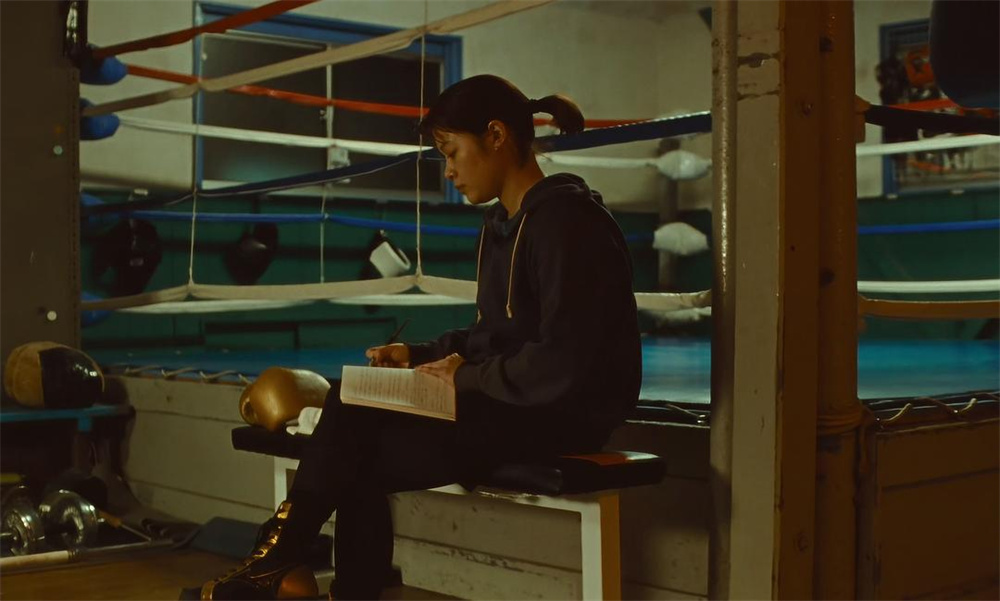
"Keiko, Gaze" Stills
Under the symphony of various sounds, the order of smoothness and chaos, regularity and chaos is constantly colliding and changing, and the change of tone wraps the characters in different spaces with different temperatures. This is the director's superb scheduling skills . Whether it's the muffled whizzing of vehicles on the outdoor training track, or the bang of boxing gloves hitting the leather when she was training with the coach, these intentionally amplified sounds are always reminders of the gazing at this part of her life. The audience, the protagonist's world, is how quiet and lonely it is. The aphasic silence and violent punches create an extremely emotional contrast between the character's outward weakness and inner toughness.
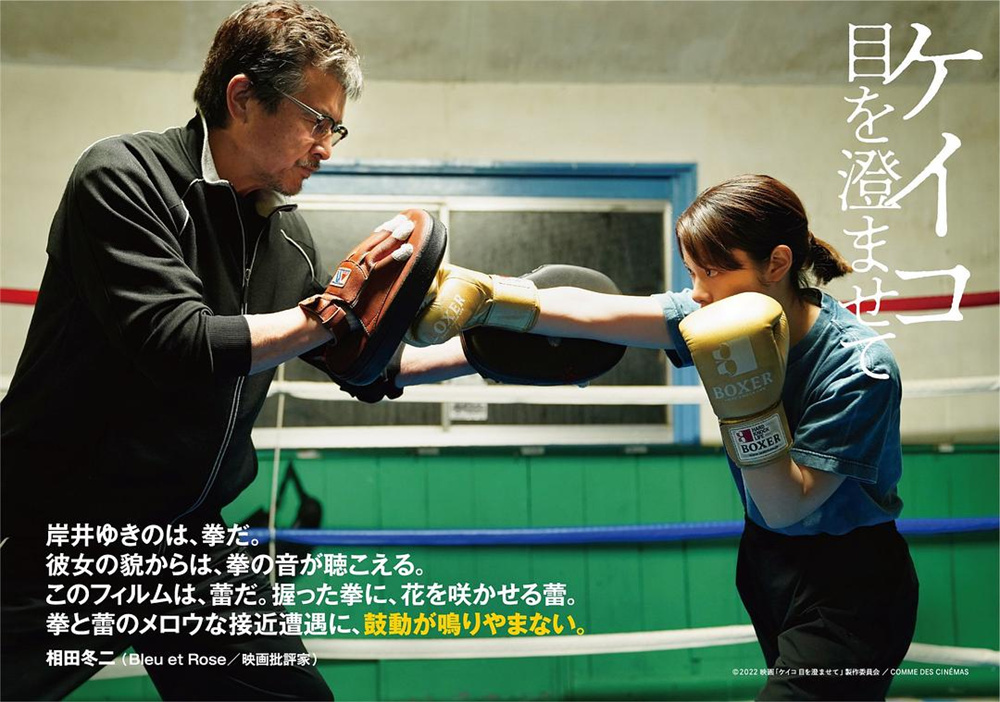
"Keiko, Gaze" Stills
Hearing and expressive impairments make her isolated from the crowd. In a world without sound, she constantly encounters various inconveniences caused by hearing and expressive impairments. Taking the game as an example, she couldn't hear the referee's order, the countdown, and the ringing of the arena bell.
The president said that Keiko is not considered talented, but she has good eyesight and is good at observing opponents. So the camera took us to "stare" at the opponent with Keiko, watching her react quickly to punch, dodge sensitively or hit the target powerfully. Exciting, but after a brief moment of comfort and glory, life still flows smoothly.
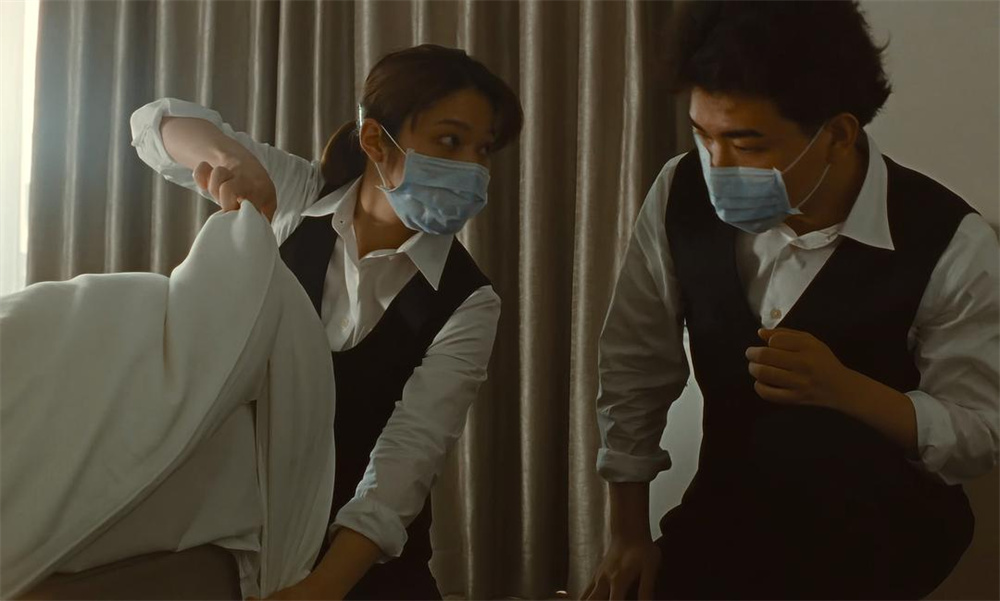
"Keiko, Gaze" Stills
In addition to going to the boxing gym to train and prepare for competitions, her source of livelihood is working as a cleaner in the hotel. In the day-to-day labor, Keiko is the same as the boxing ring, a down-to-earth, meticulous, hard-working and stubborn girl. And the life shown in the movie is seamlessly integrated into the daily life of the epidemic. The mask blocks Keiko's gaze on other people's lips, and the originally limited communication becomes an additional obstacle, which makes the loneliness easily isolated by irresistible external forces The sense of powerlessness and powerlessness concretely and freely extends to the whole film, throughout.

"Keiko, Gaze" Stills
At the same time, other characters living around Keiko are also tender and helpless. Through Keiko's counterattacks against life, with the boxing gym as the core, the lives and hearts of the characters associated with it are also vividly displayed.
The disease keeps getting worse, but the chairman who studies the game video for Keiko all night is the most touching branch line, and it is also the most affectionate extension of the film's sense of powerlessness.
According to the usual routine of sports-themed movies, the protagonist will definitely face a "big battle", and no matter how difficult the situation is in the last battle, he can fight back and start a new life from then on.
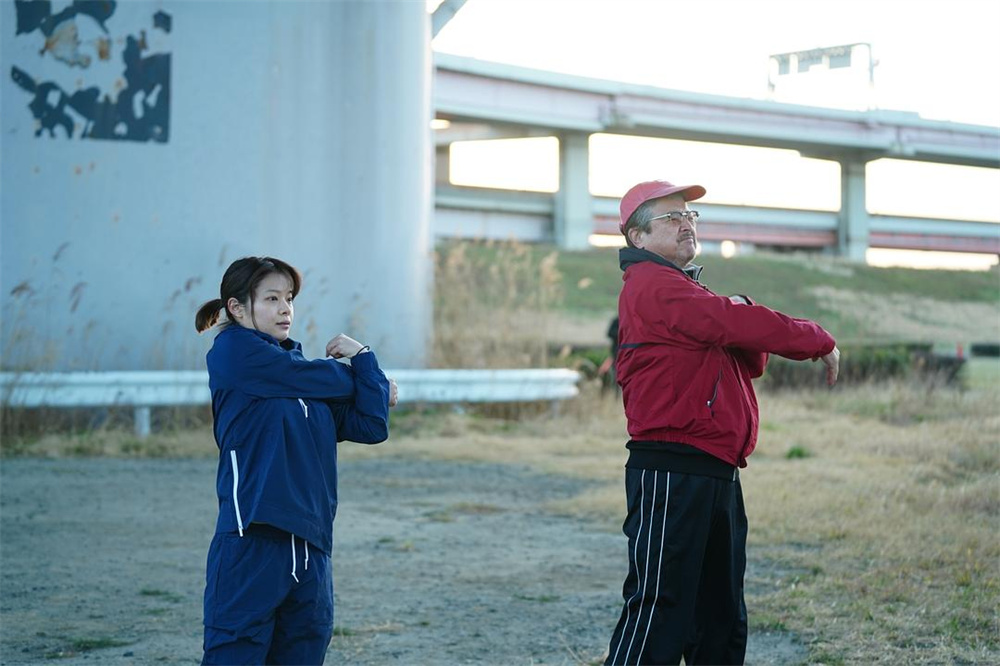
"Keiko, Gaze" Stills
But Keiko failed to defeat Sayaka after all. In life, I ran into Sayaka who was dressed in work clothes. After thanking her, she went to her work with vigor and relief. It also allowed Keiko, who had suffered a failure, to see another self who was redeemed by amateur boxing. It has to be said that this "reversal" far exceeds the functionality of the drama, and once again brings the film's structure to a higher level.

"Keiko, Gaze" Stills
Keiko, who lost the game, went to work as usual, teaching the younger generation how to tuck in the quilt, and ran up the river bank in the sunset. The game will be lost, the president will grow old, the boxing gym will be closed, and life will continue to roll forward between constant disillusionment, acceptance and not giving up.


